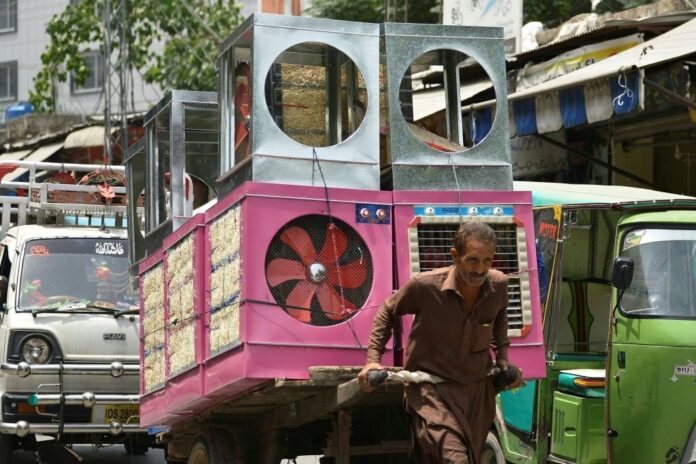ISLAMABAD: Electricity supplies to homes, businesses and factories across Pakistan have been cut for several hours a day as the country grapples with a 5,349 megawatts power deficit.
The power supply remained at 19,210 megawatts against the nationwide demand of 26,049 megawatts.
Currently, the country gets 64 percent of its electricity from fossil fuels, with another 27 percent from hydropower, 5 percent from nuclear power and just 4 percent from renewables such as solar and wind.
According to the Power Division that 4,940 megawatts of electricity is being generated from water, whereas, thermal plants are producing another 1,176 megawatts.
The total production of the private sector stands at 9,858 megawatts, of the wind power plants at 689 megawatts and of the solar plants at 116 megawatts.
The bagasse-based power producers generate 156 megawatts of electricity while 2,276 megawatts are generated through nuclear fuel.
On the other hand, the nation is experiencing a great deal of inconvenience due to prolonged power outages across the country. According to the media, the country is witnessing unannounced outages of 10-15 hours.
“Major urban centres are witnessing load shedding duration of 10 hours while the rural areas are facing power outages of up to 15 hours,” reports citing sources said.
Interestingly, only a year ago, Pakistan was generating more electricity than it needed. Large-scale construction of new power plants — largely coal-fired ones funded by China — had dramatically boosted the nation’s energy capacity.
“It’s true. We are producing much more than we need,” Tabish Gauhar, former special assistant to then-prime minister Imran Khan on power, told the Thomson Reuters Foundation.
The situation is likely to worsen as summer intensifies, when air conditioners are switched on full blast.
BLISTERING HEATWAVE
South Asia has been in the grip of an extreme heatwave since last month, with parts of Pakistan reaching a temperature of 50 degrees Celsius as officials warned of acute water shortages and a health threat.
Swathes of Pakistan and India have been smothered by high temperatures since April in extreme weather that the World Meteorological Organisation (WMO) has warned is consistent with climate change.
Last Friday, the city of Jacobabad in Sindh hit 50C (122 degrees Fahrenheit), the Pakistan Meteorological Department (PMD) said, with temperatures forecast to remain high.
“It’s like fire burning all around,” said labourer Shafi Mohammad, who is from a village on the outskirts of Jacobabad where residents struggle to find reliable access to drinking water.
Nationwide, the PMD alerted temperatures were between 6C and 9C above normal, with Islamabad — as well as provincial hubs Karachi, Lahore and Peshawar — recording temperatures around 40C over the weekend.
“This year we have jumped from winter right into summer,” said PMD chief forecaster Zaheer Ahmad Babar. Pakistan has endured heightened heat waves since 2015, he said, especially in upper Sindh and southern Punjab.
“The intensity is increasing, and the duration is increasing, and the frequency is increasing,” he told AFP.
Jacobabad nurse Bashir Ahmed says that, for the past six years, heatstroke cases in the city have been diagnosed earlier in the year — starting in May, rather than June or July. “This is just increasing,” he said.
— With input from AFP























